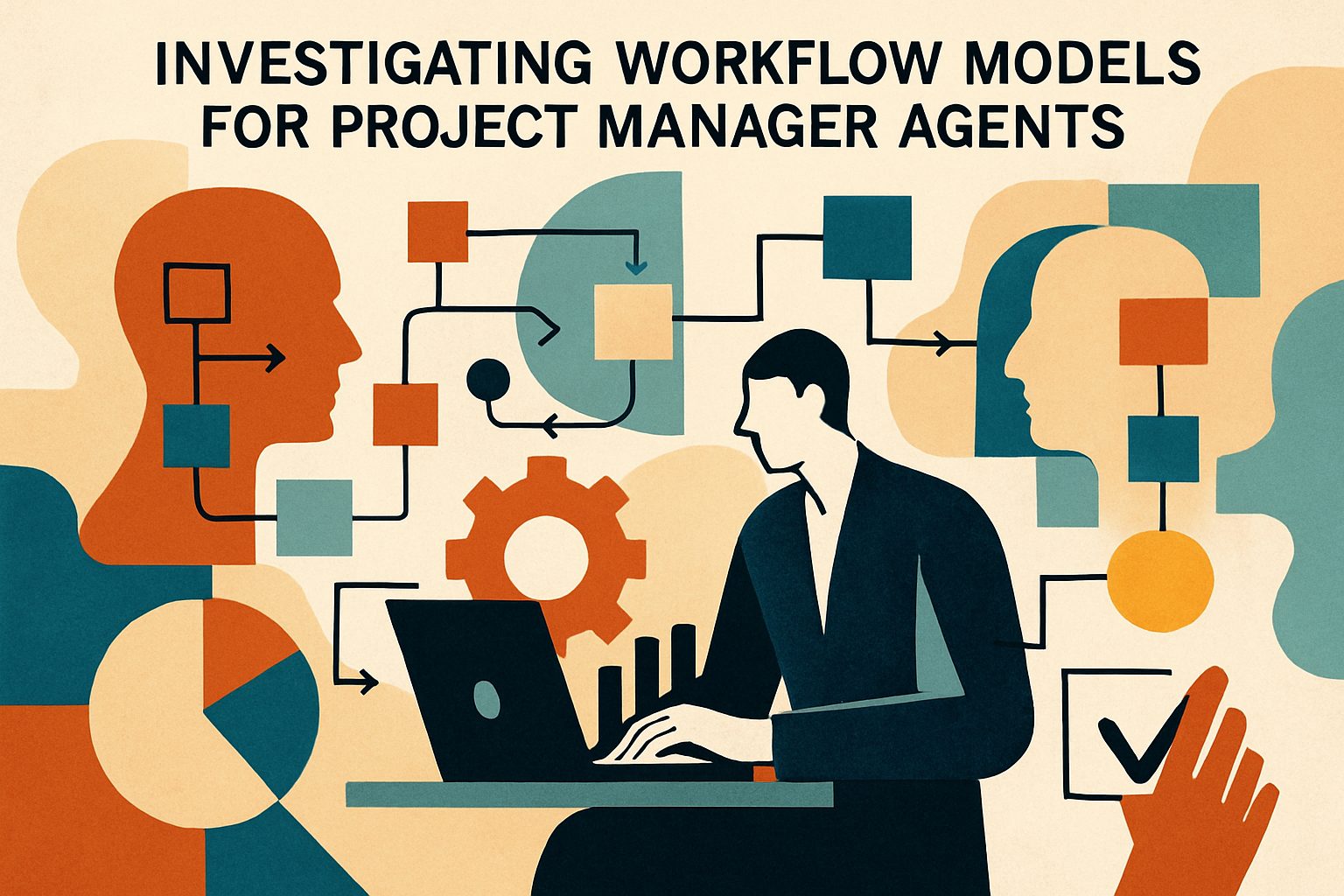
Unlocking Project Success: A Comprehensive Guide to Workflow Models for Project Managers
Discover the essential workflow models that can elevate your project management game. This article delves into the various types of workflows available, evaluating the project manager agents linked to each model, and weighing their pros and cons for optimal team efficiency.

Introduction
Workflow models serve as the backbone of project management, enhancing operational efficiency and fostering better collaboration. In this analysis, we’ll explore various workflow models, identify the project manager agents associated with them, and discuss their respective advantages and disadvantages based on existing literature. We draw insights from recent research findings and existing sources to paint a comprehensive picture of how these models can be effectively utilized.
Understanding Workflow Management
Workflow management is integral to achieving organizational goals effectively by designing, executing, and optimizing task sequences. According to ProjectManager, it ensures tasks flow smoothly among team members, eliminating bottlenecks and maintaining timelines. Key components of a workflow include:
- Inputs: Resources needed for task completion (e.g., information, materials).
- Transformation: Steps to convert inputs into outputs.
- Outputs: Deliverables that result from the transformation process.
Managing these components is critical to preventing delays and inefficiencies.
Identified Workflow Models
Several prominent workflow models cater to different project needs, each with distinct advantages and drawbacks:
| Model | Description | Pros | Cons |
|---|---|---|---|
| Sequential Workflow | Tasks are completed in a strict order. | Clear structure; easy to manage dependencies. | Inflexible; potential delays if one task is slow. |
| Parallel Workflow | Multiple tasks executed simultaneously. | Increases efficiency for independent tasks. | Complex management; risk of resource conflicts. |
| Mixed Workflow | Combines sequential and parallel elements. | Flexible; adaptable to various project needs. | Can be complicated to design and manage. |
| Dynamic Workflow | Adapts to real-time changes and team inputs. | Highly responsive to team dynamics. | Requires advanced tools and technology. |
| Automated Workflow | Automates repetitive tasks using technology. | Reduces human error; saves time. | Initial setup can be time-consuming. |
Key Findings from the Literature
Research has shown that the choice of workflow model can significantly influence project outcomes. For instance, a study published in the Journal of Project Management indicates that organizations using parallel workflows experienced a notable increase in project completion speed. Moreover, mixed workflows can lead to improved team morale due to enhanced collaboration opportunities, as highlighted in research from Insight7.
Project Manager Agents in Workflow Models
Various project manager agents are integral to implementing these workflow models effectively. Below is a catalog of notable agents, their functionalities, and suitable applications:
| Agent Name | Description | Key Features | Suitable Workflow Model |
|---|---|---|---|
| Wrike | A versatile tool offering real-time collaboration and workflow automation. | Task assignments, time tracking, Gantt charts, integrations with other software tools. | Sequential, Mixed |
| Asana | A flexible platform for task management and tracking project progress. | Customizable project templates, due dates, task dependencies, team collaboration features. | Sequential, Mixed |
| Monday.com | A visual project management solution allowing tailored workflows. | Automation of repetitive tasks, customizable dashboards, integrations with various applications. | Sequential, Parallel |
| Trello | A card-based tool emphasizing simplicity and visual task organization. | Drag-and-drop interface, checklists, labels, due dates for tasks. | Sequential, Parallel |
| Jira | Designed for agile project management, particularly in software development environments. | Custom workflows, agile reporting, backlog management, and sprint planning functionalities. | Sequential, Agile |
| ClickUp | A comprehensive tool combining tasks, docs, goals, and chat in one platform. | Hierarchical organization, time tracking, customizable views, integrations with various tools. | Mixed |
| Zapier | An automation platform that connects applications and automates workflows. | Workflow automation through triggers and actions; integrates with over 2,000 apps. | Sequential, Mixed |
| Smartsheet | A work execution platform offering project management capabilities in a spreadsheet format. | Gantt charts, resource management, reporting tools. | Sequential, Mixed |
Effectiveness of Project Manager Agents
The effectiveness of each project manager agent varies based on organizational needs. For example:
– Wrike and Asana excel in environments where collaboration and task tracking are critical.
– Jira is particularly suited for agile environments, enhancing team productivity through tailored workflows.
Comparative Analysis of Workflow Models
When evaluating workflow models, it’s essential to consider their efficiency, collaboration potential, complexity, and suitability for various project types:
| Workflow Model | Efficiency | Collaboration | Complexity | Suitability |
|---|---|---|---|---|
| Sequential | Moderate | Low | Low | Simple projects with clear steps |
| Parallel | High | High | High | Complex projects requiring teamwork |
| Mixed | High | Moderate to High | Moderate | Dynamic projects with diverse tasks |
Recommendations
To enhance workflow efficiency, organizations should consider:
– Adopting a Mixed Workflow Model: This provides flexibility while maintaining structure, optimizing both efficiency and collaboration.
– Investing in Management Tools: Effective management software can facilitate communication and resource allocation.
– Training Teams: Providing training on various workflow models enhances adaptability and understanding among team members.
Conclusion
In summary, selecting the appropriate workflow management model is crucial for project success. Each model has unique advantages and challenges that organizations must consider in light of their specific needs and team dynamics. By leveraging best practices and technology, organizations can significantly enhance their project management efforts.
For further insights into workflow management, you can explore resources like Atlassian and Digital.gov to deepen your understanding of how to optimize your project workflows.
Vyftec – Workflow Solutions for Project Managers
At Vyftec, we specialize in empowering project managers with cutting-edge workflow automation models tailored to enhance efficiency and productivity. Our expertise in AI-driven solutions, coupled with n8n workflow automation, allows us to analyze and implement diverse methodologies that streamline project management processes. Whether it’s optimizing task allocation or integrating seamless communication channels, we provide data-driven insights and customized workflows that elevate project execution.
Experience Swiss-quality precision in transforming your project management practices. Let us guide you through the dynamic landscape of workflow solutions and harness the power of automation for your team’s success. Reach out to us today to explore how we can elevate your project management approach.
📧 damian@vyftec.com | 💬 WhatsApp


